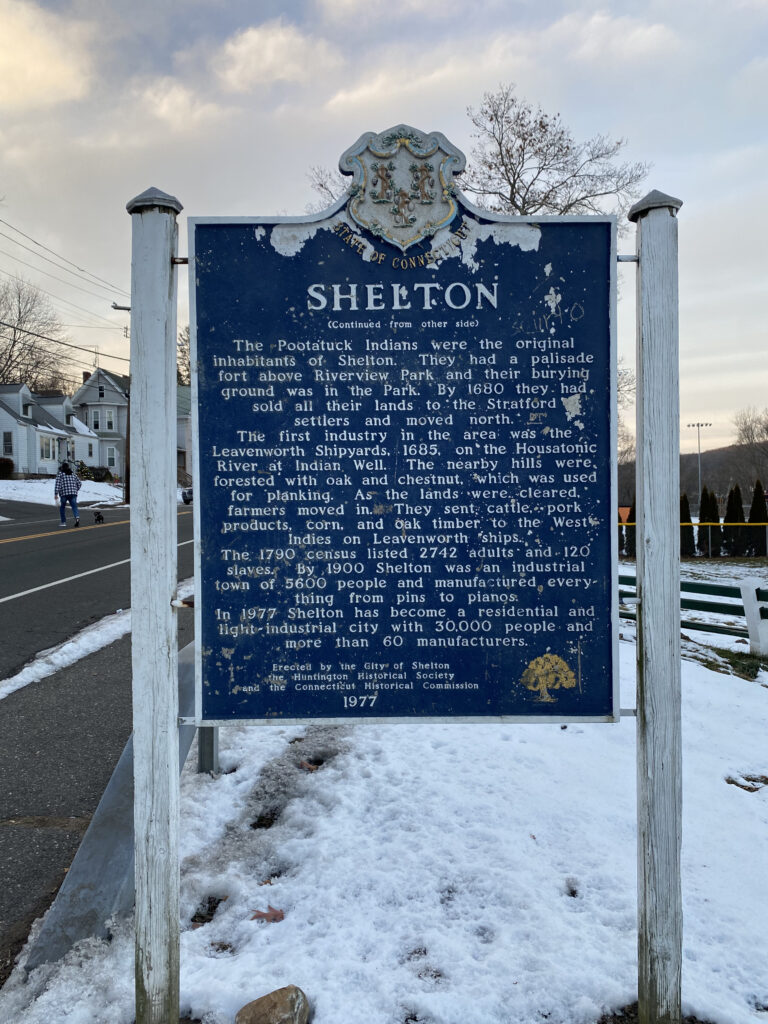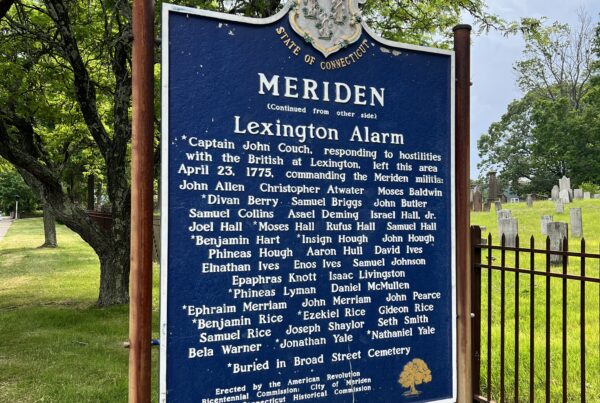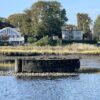
Shelton, Connecticut:
“1639 – Stratford area settled, with present-day Shelton as the northern part.
1717 – Northern settlers established Ripton parish.
1789 – Ripton separated from Stratford and became the town of Huntington, named for Governor Samuel Huntington.
1870 – Derby-Shelton dam built, allowing industrial development along the Housatonic River.
1915 – The borough of Shelton incorporated as a city, named for Edward N. Shelton, industrialist and promoter of the dam.
1919 – Town of Huntington became Shelton by act of the General Assembly.“The Pootatuck Indians were the original inhabitants of Shelton. They had a palisade fort above Riverview Park and their burying ground was in the Park. By 1680 they had sold all their lands to the Stratford settlers and moved north. The first industry in the area was the Leavenworth Shipyards, 1685, on the Housatonic River at Indian Well. The nearby hills were forested with oak and chestnut, which was used for planking. As the lands were cleared farmers moved in. They sent cattle, pork products, corn, and oak timber to the West Indies on Leavenworth ships. The 1790 census listed 2,742 adults and 120 slaves. By 1900 Shelton was an industrial town of 5,600 people and manufactured everything from pins to pianos. In 1977 Shelton has become a residential and light-industrial city with 30,000 people and more than 60 manufacturers.”
View on Instagram: https://instagr.am/p/CYpdQEmMFMz/






